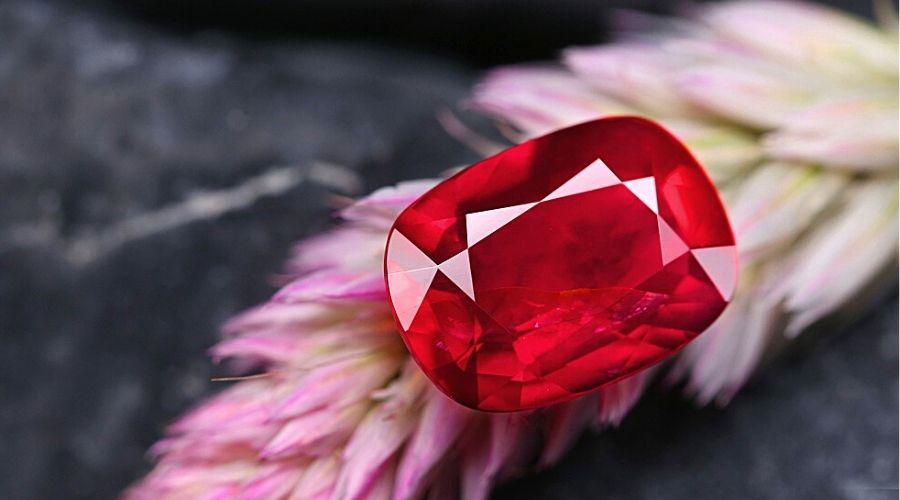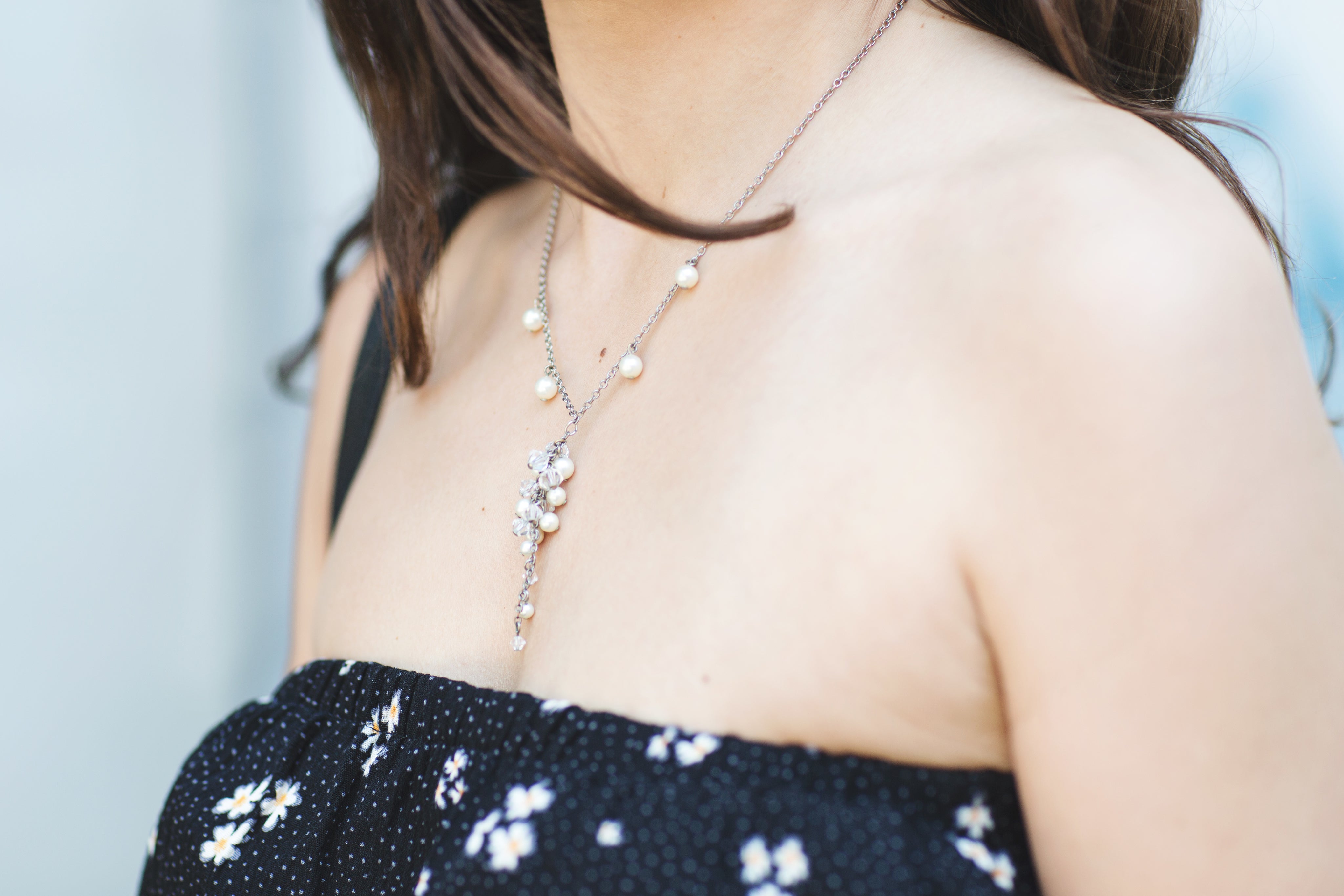
A ruby’s vibrant red coloring symbolizes passion and love and is associated with royalty and wisdom. These July birthstones are highly sought after as one of the hardest gemstones around. Rubies are also among the most precious gemstones, rivaling sapphires, diamonds, and emeralds.
Considering how valuable they are, it’s only natural to ensure that the stone you’re buying is the real deal. Here’s how to tell if a ruby is real and what you should know about identifying imitation rubies.
What You Should Know About Rubies: A Quick Guide
When you’re shopping, there’s a couple of terms you may hear used to describe rubies: natural, synthetic, and imitation. These terms can mean very different things in terms of the stone’s composition and price. Understanding what they mean is the first step to identifying real rubies.
Natural Ruby

Natural rubies, as the name suggests, are authentic stones formed without human intervention. These rubies take millions of years to form. Once they’re ready to mine, the extraction process requires a great deal of care.
Corundum, which is the same element that creates sapphires, also forms rubies. So why are these gems red instead of blue? The color change has to do with how much chromium is there during the formation process. The more chromium there is, the more vibrant the color of your ruby will be.
Given how long they take to form and how fragile the extraction process can be, it shouldn’t come as a surprise that natural rubies have a much higher value than synthetic or imitation gems.
Synthetic Ruby

Synthetic rubies may look just like natural ones, but they’re created by scientists in labs. Since they have the same physical and chemical structure as a natural ruby, synthetic rubies are still considered real. They just take months to form rather than millions of years. The faster process makes these gems more ethical, sustainable, and affordable.
Synthetic rubies also don’t have the same flaws or stains that natural rubies do. These rubies are flawless and a great choice for anyone shopping on a budget.
Ruby Imitators
The other category is imitation rubies. While these gems may look like rubies at first glance, they have different chemical and physical structures. They are not rubies, but entirely different red gemstones. Imitations are the most affordable choice out of the three, but they’re also often less durable than a synthetic or natural ruby.
Common Imitation Rubies
There are several distinct imitators to be mindful of. Understanding what fake rubies look like helps you identify real ones. From garnet to tourmaline, here’s what you should know.
Garnet

Garnets, another red gemstone, can make eye-catching jewelry, but they usually don’t have the same brilliance that a real ruby does. Compared to a ruby’s vibrant red, garnets may have mahogany or burgundy coloring.
Keep in mind that garnets aren’t as strong as rubies. They only rank around 6.5 to 7.5 on the Mohs scale, while rubies rank closer to 9.
Red-colored Glass

You might not think glass could be a substitute for rubies. Red-colored glass, though, is often used as a cheap alternative. Red glass is lighter and less vibrant than real gems, and they are a lot less durable. They are the cheapest of the imitations.
Ruby Composite

Sometimes passed off as “real rubies,” composite rubies use a combination of low-quality natural rubies and glass. During the creation process, liquid glass replaces any debris and foreign minerals. The result is a bigger (and pricier) stone that fuses glass and corundum.
Tourmaline

Tourmaline is a gemstone with dark red coloring made of crystal silicates. Since it’s more common and affordable than natural or synthetic rubies, a seller might try to pass tourmaline off as a ruby. However, tourmaline tends to have purple hues and isn’t as durable.
Ways to Tell if a Ruby is Real
Now that you understand the difference between natural, synthetic, and imitation rubies (as well as what gems imitate rubies), it’s time to discuss what specific methods to use to determine a ruby’s legitimacy.
Color, Radiance, and Glow
One of the easiest ways to determine whether a ruby is real is by looking closely. It’s additionally helpful if you can compare it to a ruby that you already know is real. Actual rubies have a deep scarlet hue. The color of a ruby is often so brilliant that many describe these gems as “bright” or “glowy.”
Imitation rubies, like garnet or tourmaline, have similar coloring but often look dull next to a genuine ruby.
Check For Tiny Flaws

If you’re trying to determine a natural ruby, you can check for flaws under a microscope in a process called spectroscopy. Because of the environment they’ve formed in, any natural ruby is likely to have a few imperfections. With the proper instruments, these stains and flaws become visible.
Keep in mind that spectroscopy needs to be performed by a professional. The flaws on a natural ruby only become obvious with a microscope and high magnification. You won’t be able to see them with the naked eye.
If spectroscopy shows no flaws in your ruby, you could have a synthetic ruby or imitation.
Do the Glass-to-Glass Comparison Test
Since many artificial rubies use glass or glass combinations, use the glass-to-glass comparison test to check authenticity. All you need is a piece of glass that’s a similar color and hue. If the two have the same color, you have a fake ruby. Rubies will never be the same color as regular glass.
Do the Scratch Test

At a 9 on the Mohs scale, rubies aren’t easily scratched unless you use a diamond. Other gemstones and imitations are more fragile. You can scratch the surface of your ruby with a coin, and if it leaves marks, you likely have a fake. Real rubies won’t get scratched by keys or coins.
Do the Rub Test
The rub test includes rubbing your ruby across a smooth (but hard) surface, like glass, and seeing if the gem leaves any color behind. Glass only has a hardness of 5 on the Mohs scale, so it’s much softer than actual rubies. Real rubies and some gems shouldn’t leave any color behind, but cheap fakes or imitations can.
However, just because your ruby doesn’t leave color behind doesn’t mean it’s not another gemstone being passed off as a ruby. Still, it’s a good place to start.
Price Point
Since natural rubies are rare, they’re also expensive. Generally, synthetic rubies run about 20% cheaper than natural rubies do. Imitations and fakes tend to be 90% cheaper than natural rubies.
So, if someone is trying to sell you a ruby at a low price, there’s a good chance you’re getting an imitation or fake.
Ask a Pro

While the tips and tricks above are great places to start, the only foolproof way to determine a ruby’s authenticity is by asking a professional gemologist to examine it. Not only do they have the training and experience to tell fakes from real rubies, but they also have the right tools.
Your Ruby Shopping Guide
Purchasing a ruby can feel overwhelming, so here’s how you can shop for rubies wisely:
- Make sure you’ve authenticated the ruby. If you’re trying to buy a natural or synthetic ruby, carefully authenticate it. This means purchasing from a reputable jeweler with good customer reviews. You may even choose to get your ruby professionally examined by a gemologist before you buy. You can get a certificate of appraisal, which proves the ruby’s worth and legitimacy.
- Look for high-quality images of the ruby. If you’re browsing online, be wary of shops that only use stock images. With any gem, you’ll want to see high-quality images of the exact piece.
- Be wary of “great deals.” While it’s not unusual for jewelry shops to run sales or offer discounts, you should be careful about any seller that offers a ruby for cheap. If the price seems too good to be true for an actual ruby, it usually is.






Leave a comment